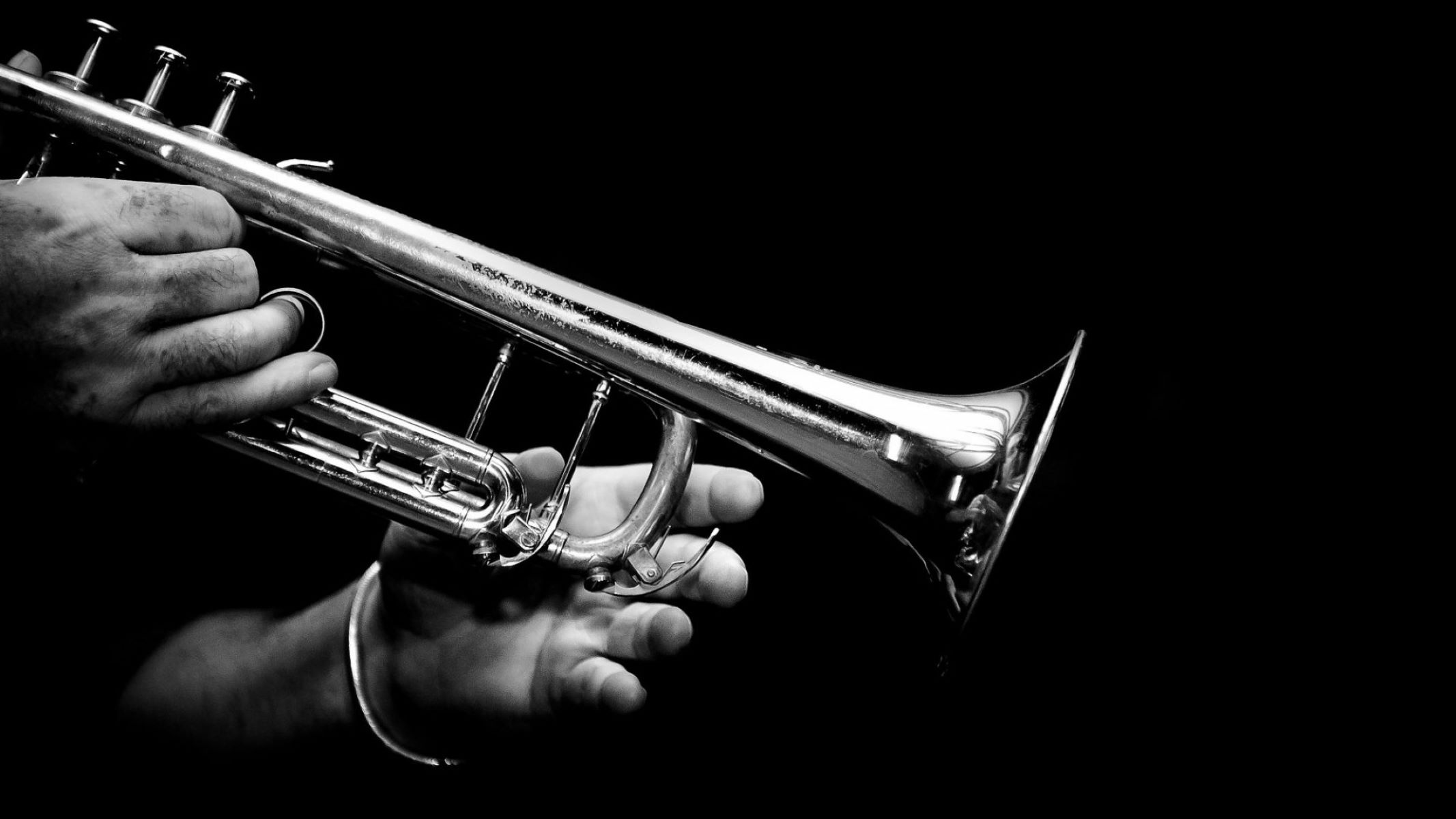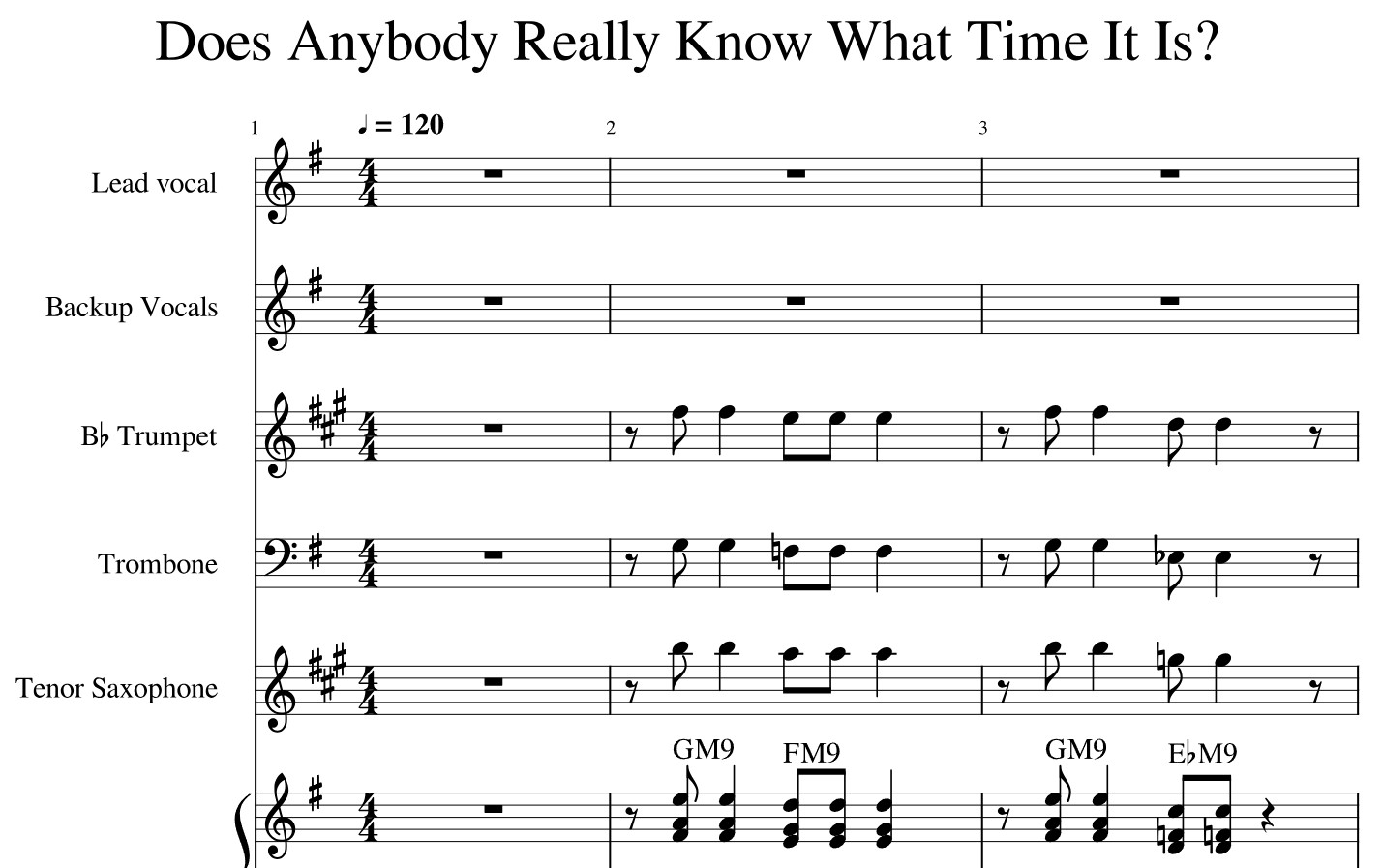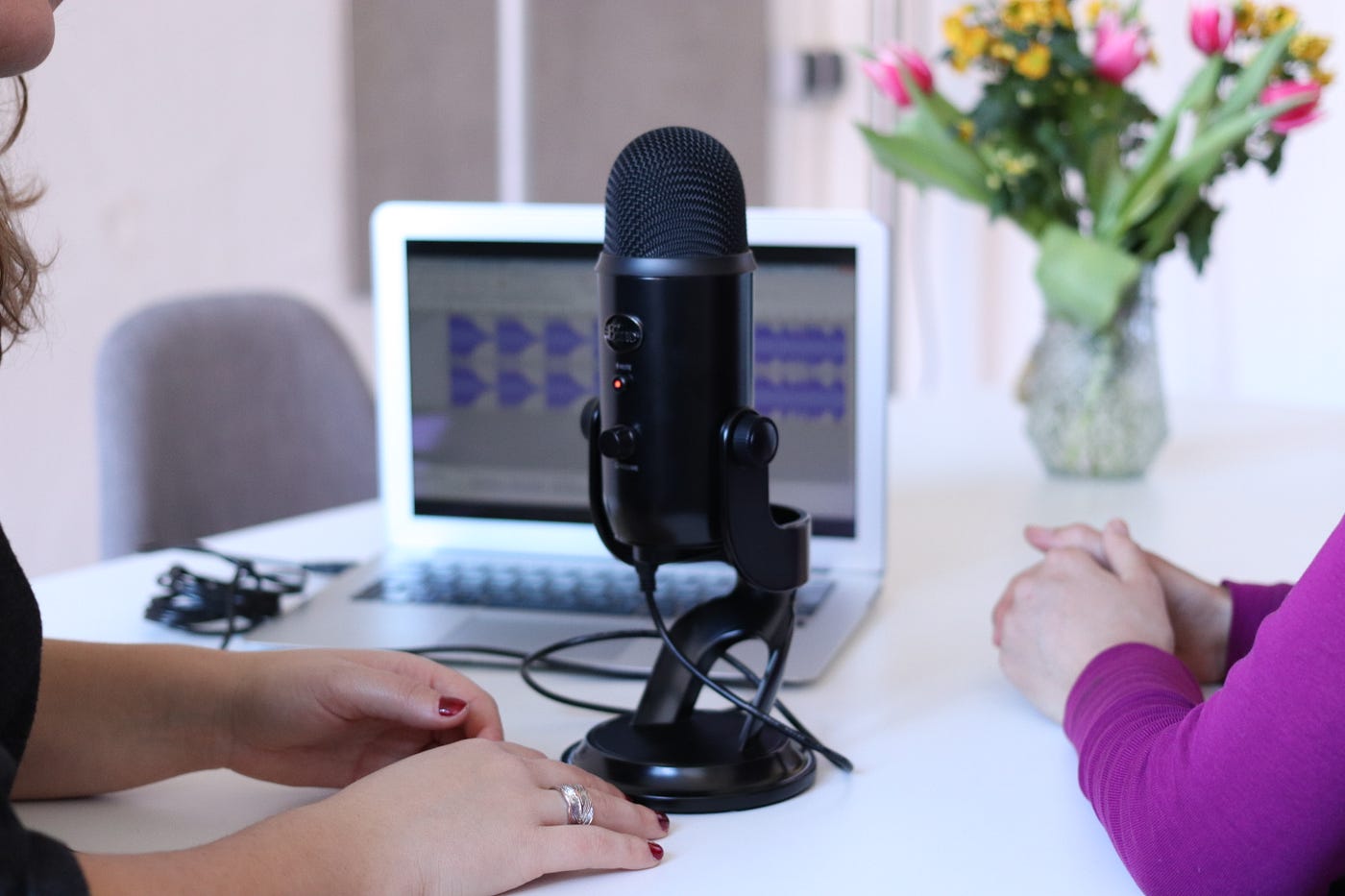Home>Production & Technology>Musician>What Does A Time Signature Tell A Musician


Musician
What Does A Time Signature Tell A Musician
Published: January 29, 2024
A time signature is a notation in sheet music that tells a musician about the rhythm and meter of a musical composition, allowing them to understand the structure and timing of the piece.
(Many of the links in this article redirect to a specific reviewed product. Your purchase of these products through affiliate links helps to generate commission for AudioLover.com, at no extra cost. Learn more)
Table of Contents
Introduction
When you listen to music, you may find yourself tapping your foot or nodding your head in time with the rhythm. Have you ever wondered how musicians stay in sync with each other? That’s where time signatures come into play. Time signatures are an essential element in music notation, providing musicians with a roadmap for the rhythm and structure of a piece.
A time signature, represented by a fraction-like symbol at the beginning of a musical piece, consists of two numbers stacked on top of each other. The top number represents the number of beats per measure, while the bottom number denotes the note value that receives one beat. Understanding time signatures is crucial for musicians, as they determine the overall feel, groove, and timing of a piece of music.
Whether you’re a musician or a music enthusiast, delving into the realm of time signatures can deepen your appreciation and understanding of music. In this article, we’ll explore the importance of time signatures, how they influence the rhythm, and the crucial role they play in musical interpretation. So, let’s dive in and uncover the fascinating world of time signatures!
Understanding Time Signatures
Time signatures provide musicians with a basic framework for understanding the rhythm of a musical composition. They indicate how beats are grouped and organized within a measure, helping musicians maintain a consistent tempo and play in sync with each other.
Time signatures consist of two numbers written in the form of a fraction. The top number represents the number of beats per measure, while the bottom number indicates the note value that receives one beat. For example, in a 4/4 time signature, there are four beats per measure, and a quarter note receives one beat.
The bottom number in the time signature determines the note value that represents one beat. Common examples include:
- 4 – the quarter note receives one beat (e.g., 4/4 time signature)
- 8 – the eighth note receives one beat (e.g., 6/8 time signature)
- 2 – the half note receives one beat (e.g., 2/2 time signature, also known as cut time)
By understanding time signatures, musicians can anticipate the rhythmic structure of a piece and determine how to interpret the music accurately. It allows them to establish a consistent pulse and create a cohesive sound when playing with other musicians.
Next, let’s explore the relationship between beats and measures within a time signature.
Beats and Measures
In music, beats and measures work hand in hand within the context of a time signature. Understanding these concepts is essential for musicians to maintain the rhythmic integrity of a piece.
A beat refers to the underlying pulse of the music, often felt intuitively as a regular and consistent pattern. It serves as the foundation for the rhythm and dictates the overall tempo of a piece. In a time signature, the top number represents the number of beats per measure, indicating how many strong pulses or accents to expect in each measure.
A measure, also known as a bar, is a designated portion of music that contains a specific number of beats as indicated by the time signature. Measures help to organize the music into manageable sections, allowing musicians to navigate through the music more easily.
The duration of each beat is determined by the bottom number in the time signature, which represents the note value that receives one beat. For example, in a 4/4 time signature, there are four beats per measure, and each beat is represented by a quarter note.
By understanding the relationship between beats and measures, musicians can develop a clear sense of timing and maintain a consistent tempo throughout the piece. It also enables them to accurately subdivide the beats and execute complex rhythmic patterns.
Next, let’s explore how beats can be divided within a measure.
Division of Beats
Within a measure, beats can be further divided into smaller note values, giving music its rhythmic complexity and diversity. The division of beats is crucial for musicians to accurately interpret and perform the rhythmic patterns of a piece.
Subdivisions occur when each beat is divided into equal parts, creating a rhythmic pattern that adds depth and articulation. The most common subdivisions are eighth notes, which divide each beat into two equal parts, and sixteenth notes, which further divide each beat into four equal parts.
For example, in a 4/4 time signature, where each beat is represented by a quarter note, the beat can be subdivided into two eighth notes, allowing musicians to execute more intricate rhythms within each measure.
The division of beats varies depending on the complexity of the music and can include other note values such as triplets, which divide each beat into three equal parts, or even smaller subdivisions like thirty-second notes.
Understanding the division of beats allows musicians to navigate through complex rhythmic patterns with precision. It helps them maintain a steady pulse while executing various note values and syncopated rhythms.
By mastering the division of beats, musicians can create a sense of groove, intricacy, and dynamic expression in their performances. It enables them to bring the music to life and engage the listener through rhythmic variation.
Next, let’s discuss the relationship between time signatures and tempo.
Tempo and Time Signature Relationship
The tempo of a musical piece refers to the speed or pace at which it is performed. It plays a significant role in setting the mood, energy, and overall character of the music. The relationship between tempo and time signature is closely intertwined, as they both contribute to the rhythmic interpretation of a piece.
While the time signature provides the framework for the rhythm, the tempo determines the speed at which the beats and measures unfold. The tempo is usually indicated at the beginning of a piece by terms such as adagio (slow), allegro (fast), or moderato (moderate) to guide musicians in the overall pacing.
An appropriate tempo choice is crucial for maintaining the integrity of the music and conveying the intended emotion. It is in the hands of the performer to execute the interpretation effectively, striking a balance between adhering to the time signature and conveying the desired feeling through the tempo choice.
For example, a piece with a 3/4 time signature, often associated with a waltz, typically has a moderate tempo to maintain the flow and grace of the dance. On the other hand, a piece with a 6/8 time signature, commonly found in lively Irish jigs, would typically be performed at a faster tempo to capture the spirited nature of the music.
The tempo and time signature relationship is a vital aspect of musical performance, as it influences the overall feel, energy, and emotion conveyed to the audience. It requires musicians to make informed decisions about the tempo while staying true to the rhythmic structure provided by the time signature.
Next, let’s explore how musicians interpret and bring life to the music through the understanding of time signatures.
Musical Interpretation
Musical interpretation refers to the process of bringing life, emotion, and personal expression to a piece of music. It is through interpretation that musicians transform written notes on a page into a captivating and engaging musical performance.
One of the fundamental elements of musical interpretation is understanding the time signature. By grasping the structure and rhythm provided by the time signature, musicians can make informed decisions about how to shape the music.
For example, a piece with a 4/4 time signature may have a strong and steady beat, suggesting a sense of stability and regularity. Musicians can emphasize and accentuate the downbeat to anchor the rhythm and create a sense of grounding in the performance.
On the other hand, a piece with a time signature like 7/8 may have a more unpredictable and uneven rhythm. Musicians can play with the placement of accents and explore different subdivisions of beats to convey the unique character and complexity of the music.
Interpretation also involves understanding the overall mood, dynamics, and phrasing of the piece. Musicians can use the time signature as a guide to shape phrases and create moments of tension and release, highlighting the rhythmic structure and enhancing the musical narrative.
Furthermore, interpretation can involve making artistic choices in terms of tempo fluctuations, rubato (subtle tempo changes), and rhythmic liberties within the framework of the time signature. These choices add personal expression and depth to the performance, allowing musicians to connect with the emotional essence of the music.
By diving into the intricacies of the time signature and understanding its relationship to the music, musicians can craft unique interpretations and deliver compelling performances that resonate with listeners.
In the next section, we will explore the concept of changing time signatures and its impact on musical compositions.
Changing Time Signatures
Changing time signatures within a musical composition can introduce complexity, variety, and a sense of rhythmic exploration. These transitions provide musicians with exciting opportunities to showcase their versatility and adaptability.
When a time signature changes, it signals a shift in the rhythm and structure of the music. It can occur for various reasons, such as emphasizing a particular section, enhancing the musical narrative, or creating a sense of surprise and intrigue.
The transition between time signatures requires careful attention from musicians to ensure a smooth and seamless progression. They must be able to adapt their playing and adjust their internal pulse to accommodate the new time signature effectively.
Changing time signatures can have a significant impact on the overall feel of a piece. For instance, shifting from a slow, steady 4/4 time signature to a lively 6/8 time signature can instantly inject energy and movement into the music.
These transitions may also serve as a compositional tool, allowing musicians to create rhythmic complexity and add layers of interest to their performances. It encourages them to explore different subdivisions, syncopations, and polyrhythms, creating an engaging musical experience.
It is essential for musicians to practice and rehearse the transitions between time signatures thoroughly. This ensures precision, accuracy, and a cohesive ensemble performance, particularly when playing in a group setting.
When executing changing time signatures, musicians need to maintain clarity and confidence. Communication and synchronization among performers become crucial, as they need to navigate the rhythmic shifts together and stay connected in their interpretation.
Changing time signatures can be both challenging and rewarding for musicians. It allows them to showcase their technical proficiency, creativity, and adaptability, all while contributing to the overall complexity and richness of the musical composition.
To wrap up, let’s summarize the key points we’ve covered in this article.
Conclusion
Time signatures play a crucial role in the world of music, providing musicians with a framework for understanding rhythm and structure. They guide musicians in maintaining a consistent tempo, executing subdivisions, and interpreting the music with creativity and expression.
By understanding time signatures, musicians can navigate through the beats and measures of a composition, creating a cohesive and synchronized performance. They can bring life to the music through musical interpretation, utilizing the time signature as a guide to shape the rhythm, dynamics, and phrasing.
Changing time signatures introduce complexity and variety, enabling musicians to showcase their versatility and adaptability. These transitions add interest and excitement to the music, requiring musicians to remain attentive and connected with each other during performances.
Ultimately, time signatures empower musicians to go beyond the written notes, adding their personal touch and emotion to their performances. By understanding the structure and rhythm they provide, musicians can create engaging, captivating, and memorable musical experiences for themselves and their audiences.
So, the next time you tap your foot or nod your head to a piece of music, remember that the time signature is the invisible force guiding the rhythmic journey. It is the foundation upon which musicians build their interpretation, bringing the music to life and captivating our hearts and souls.











